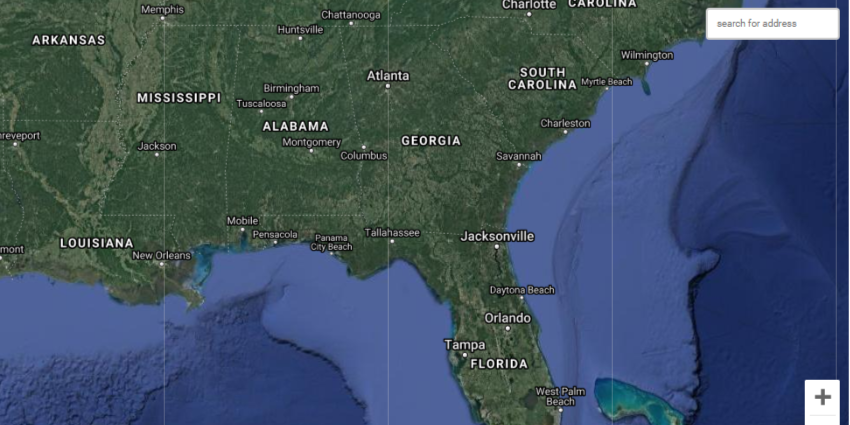AWS Public Sector Blog
Category: Sustainability
Using the AWS Cloud to restore ecosystems around the world
The world’s forests have decreased by nearly half since the onset of human civilization. Deforestation is continuing at a high rate due to agricultural pressure, poor land management, and climate change, which increases drought, disease, and invasive species. But a new generation of technologies is transforming our ability to manage and grow forests. The unprecedented level of data enables ecology-trained artificial intelligence (AI) to inventory the ecosystem and identify problems like plant condition stress, invasive weeds, species decline, and erosion. Learn how Dendra Systems is using the cloud to restore ecosystems around the world.
Accelerating climate resilience through asset-level risk assessment insights
For climate change adaptation and resilience, it is important to assess the risks associated with the impacts of climate change and then understand and take action to mitigate those risks. Since 1980, the U.S. has experienced 258 weather and climate disasters where the overall damage costs reached or exceeded $1 billion. As floods become more frequent and costly and natural hazards and climate change impact physical building assets, business continuity, and asset values, big data and analytical technology can be used to create high-tech risk assessments and economic loss estimations.
Learning about AWS sustainability datasets at “Code Green” workshop and hackathon
At the 2019 re:Invent conference in Las Vegas, Amazon Sustainability and the Amazon Sustainability Data Initiative (ASDI) hosted a four-hour workshop and hackathon to showcase ASDI’s collection of sustainability-related datasets and new ways to put those datasets to use. Called “Code Green,” the event also introduced conference attendees and participants to geospatial weather and climate data on Amazon Web Services (AWS).
NOAA and AWS expand commitment to increase access to environmental data
Today AWS announced it is expanding its collaboration with the U.S. National Oceanic and Atmospheric Administration (NOAA) to make environmental data easier to access and use. A new agreement with NOAA builds upon the work started when AWS first collaborated with NOAA on the Big Data Project in 2015. Users will now be able to access new, authoritative NOAA data within AWS without needing to download and store their own copies.
Leveraging the cloud for rapid climate risk assessments
Four Twenty Seven builds tools and services that help bring climate data (sourced from government agencies and academic institutions) to public and private organizations so they can better understand their exposure to climate hazards and manage risk in their communities. Four Twenty Seven’s new on-demand scoring application allows users to enter an asset’s location and receive risk scores for each site in real-time.
Digital Earth Africa: Enabling insights for better decision-making
As part of the Amazon Sustainability Data Initiative, Amazon Web Services (AWS) is supporting Digital Earth Africa (DE Africa). DE Africa is enabling African nations to track changes across the continent in unprecedented detail by making Earth observation (EO) data more easily accessible. This will provide valuable insights for better decision-making around prevention and planning in areas including flooding, droughts, soil and coastal erosion, agriculture, forest-cover, land use and land cover change, water availability and quality, and changes to human settlements.
Solcast: Solar irradiance forecasting for the solar powered future
Solcast produces real-time, historical and forecast estimates of the available solar radiation resources around the globe. Altogether, this requires processing imagery from five geostationary weather satellites, which take snapshots of the Earth from space every 5-15 minutes. These images can be as fine as 1 kilometer in spatial resolution and are re-captured and transmitted as frequently as every five minutes – a large volume of data. A single third-generation weather satellite in orbit over the United States such as the GOES-16 generates nearly two terabytes (TB) of data each month.
Driving sustainability through youth engagement
Today, speakers at the 24th World Scout Jamboree (WSJ) will introduce nano, a new gamified app developed on the Amazon Web Services (AWS) Cloud that encourages youth around the world to adopt daily sustainability practices to help improve our planet. The Scouts are also launching #ScoutsRecycle, a campaign that leverages the nano app for sustainability. Through nano, scouts will be able to measure the impact of their efforts by calculating the CO2e emissions avoided through #ScoutsRecycle.
Embracing the cloud for climate research
Scientists at NC State University’s North Carolina Institute for Climate Studies (NCICS) work with large datasets and complex computational analysis. Traditionally, they did their work using on-premises computational resources. As different projects were stretching the limits of those systems, NCICS decided to explore cloud computing. As part of the Amazon Sustainability Data Initiative, we invited Jessica Mathews, Jared Rennie, and Tom Maycock to share what they learned from using AWS for climate research. As they considered exploring the cloud to support their work, the idea of leaving the comfort of the local environment was a bit scary. And they had questions: How much will it cost? What does it take to deploy processing to the cloud? Will it be faster? Will the results match what they were getting with their own systems? Here is their story and what they learned.
Earth Science Information Partners: Promoting innovation for Earth science data
The Earth Science Information Partners (ESIP) is a US-based nonprofit organization funded by NASA, NOAA, and the USGS. ESIP is playing a critical role in facilitating collaborative efforts to improve the collection, stewardship, and use of Earth science data and information. As part of the Amazon Sustainability Data Initiative, we invited Dr. Annie Burgess, ESIP Lab Director, to share the story of how ESIP is advancing knowledge of Earth-system science.









